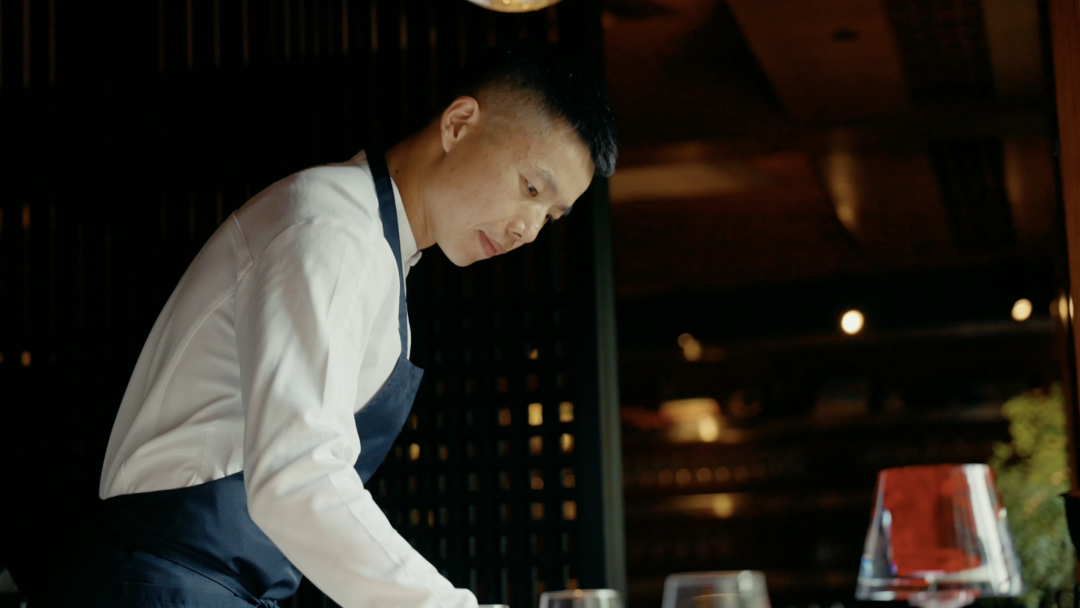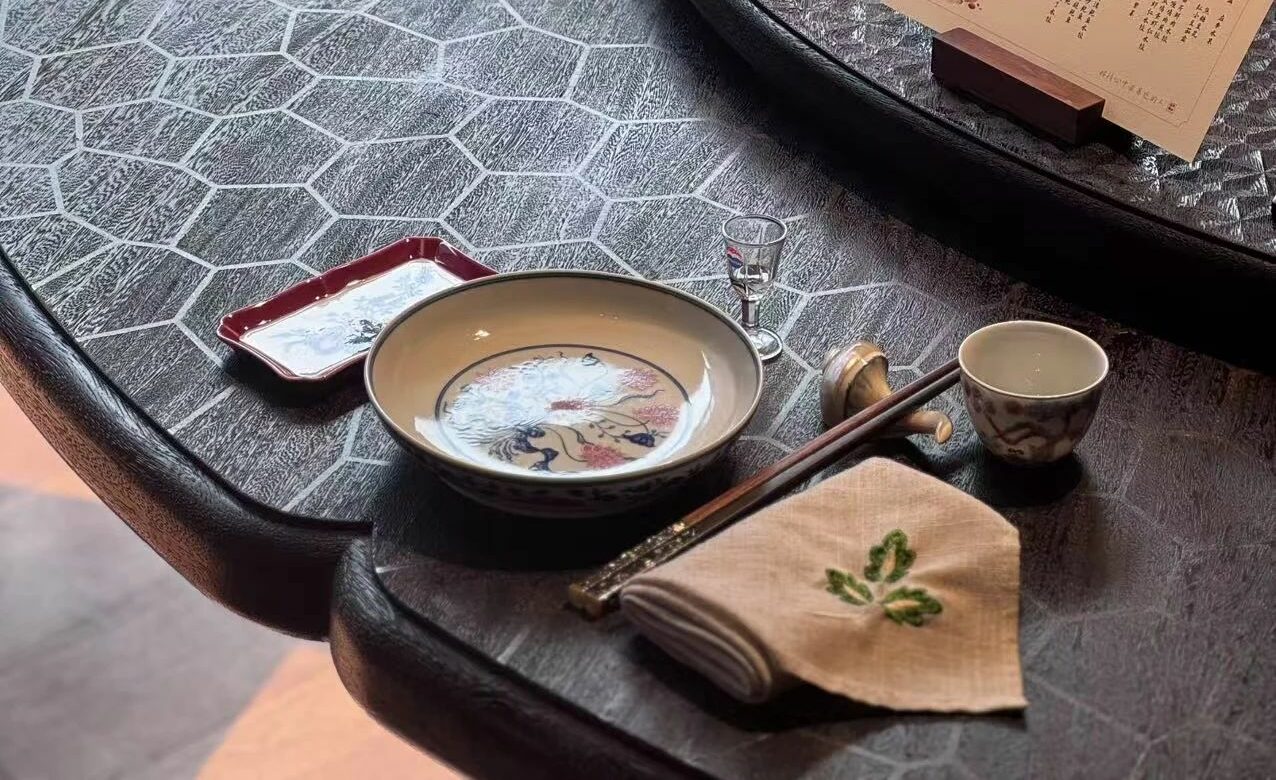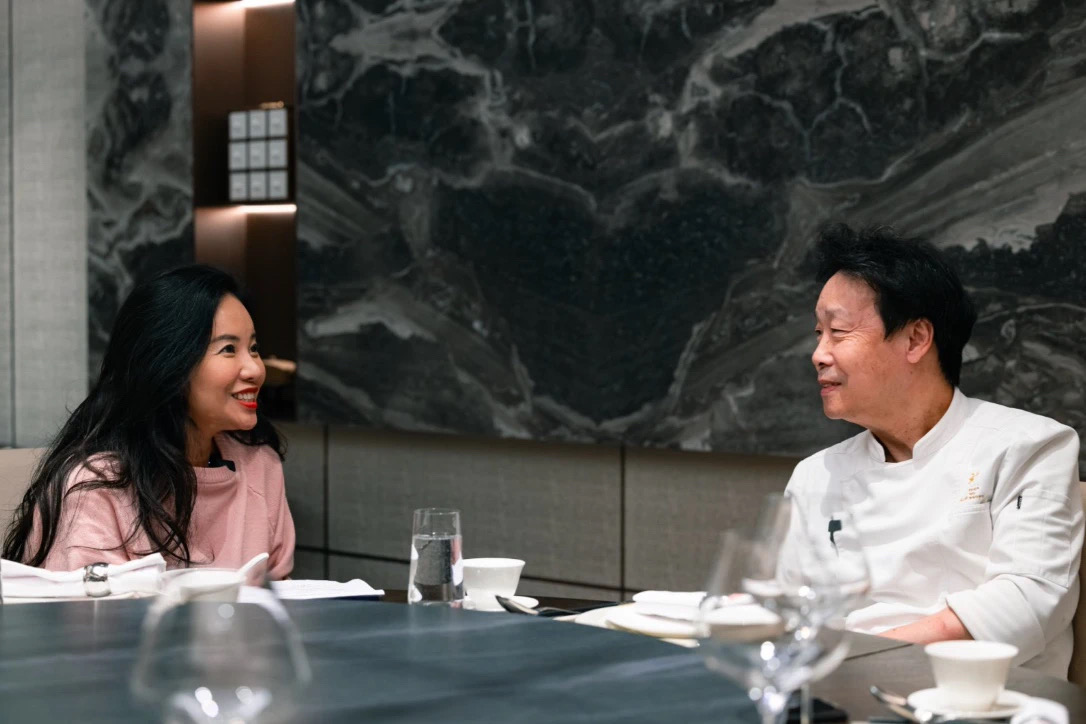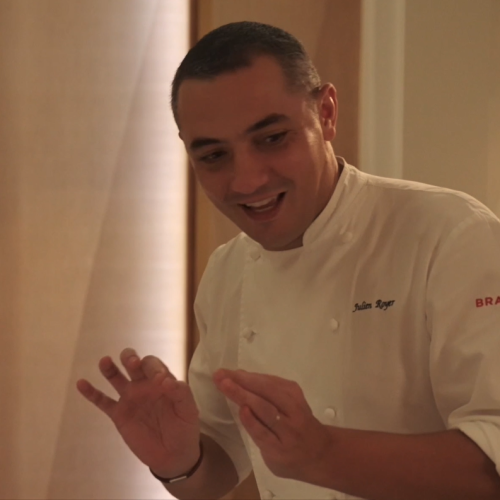Entering its tenth year, LVR (La Villa Restaurant), a modern Jiangnan cuisine restaurant located within the Seven Villas in Hangzhou, continues to uphold the essence of Jiangnan culinary traditions while incorporating contemporary creativity to offer diners a unique gastronomic experience. The name “San Yan” (Three Swallows), taken from Mencius · Teng Wen Gong II, symbolizes a steadfast and contented spirit, undisturbed by external influences.
As the executive chef of LVR, Eric Yu’s culinary journey began at a young age. After graduating from middle school, Eric decided to pursue a career as a professional chef. His father had many friends who were head chefs at hotels in Hangzhou, and these chefs often gathered to showcase their signature dishes. It was in this environment that Eric developed a strong interest in cooking. After graduating from middle school, he resolutely chose this path and enrolled in a culinary school for three years of professional training. During this period, he apprenticed under renowned chef Yu Bin for over a decade and collaborated with various international chefs, gaining extensive culinary experience.
@Jocelyn華姐的TastyTrip YouTube
Building on his solid foundation in traditional Chinese cuisine, he continuously innovated, blending different regional culinary philosophies to develop his own unique style. Eric draws inspiration from the diverse natural resources of Zhejiang’s mountains, rivers, lakes, and seas and showcases the variety and modernity of Jiangnan cuisine through contemporary cooking techniques. His culinary creations do not rigidly adhere to tradition; instead, they honor the true flavors of ingredients while incorporating modern Western culinary techniques, preserving the delicacy of Jiangnan cuisine and infusing it with endless possibilities of creativity.
 Chef Eric Yu
Chef Eric Yu
Unlike many modern Chinese chefs who focus on blending Chinese and Western cuisines, Eric’s background is firmly rooted in traditional Chinese cooking. However, as LVR is a member of the Relais & Châteaux alliance, Eric has the opportunity to collaborate with renowned chefs from around the world every year. Through these practical exchanges, he has mastered Western cooking techniques. As he delved deeper into Western culinary methods, he discovered many commonalities between Chinese and Western cuisines. By combining the two, he not only elevated the standardization of Chinese cuisine but also enhanced the flavors of traditional Chinese dishes.
This year’s summer menu is themed “Mountains, Rivers, Lakes, and Seas.” The chef carefully selected seasonal ingredients and local summer elements, with each dish showcasing a deep respect for nature and the exquisite use of ingredients.
In the cold appetizers and amuse-bouche section, three exquisite small bites are presented: River Shrimp Tart, a delightful combination of river shrimp wrapped in egg yolk sauce and a crispy wafer shell, topped with a Shaoxing yellow wine jelly, creating a multi-layered flavor profile that bursts with freshness; Scad Fish Tart, features pickled scad fish from Dongshan Island with charred glacier eggplant on a squid ink tart shell, offering a rich taste with a balance of tartness and freshness; Corn Tart, Combines Yunnan glutinous corn with yuzu sauce, topped with corn foam and a cornmeal tart shell, adding a refreshing touch to the summer menu.
The first course is steamed Horsehair Crab, served with pickled shallots, olive oil, and heart of palm. The dish is refreshing and appetizing, accompanied by pickled winter melon slices from Taizhou and Kaluga caviar. The sauce is made from kimchi juice and crayfish oil, creating a rich and unique flavor profile. The combination of pickled winter melon and the sweetness of the red crab brings out the delicate flavors of the crab meat. Although the presentation resembles French cuisine, it is full of Eastern flavors.
Next comes the pan-fried cuttlefish, which is first poached in ginger and scallion water and then pan-fried to achieve a crispy exterior and tender interior. Paired with various fresh vegetables and a loquat vinaigrette, it is refreshing and appetizing with a hint of acidity.
Fish balls, a classic Jiangnan dish made from Chinese river fish and pork fat, are presented with poached tender cress sprouts and crunchy Yunnan hand-shelled sweet peas. The dish is completed with a white pepper chicken broth and basil oil glaze, offering a savory and balanced flavor that has a nuanced similarity to the comforting taste of Bak Kut Teh.
Another dish, grilled yellow croaker, is aged for three days before being grilled to perfection, resulting in a crispy skin and tender fish. It is served with pan-fried chives and potatoes, complemented by a combination of rice wine sauce and French vegetable broth, creating a harmonious and delectable experience.
 Fish Ball
Fish Ball
The June Hairy Crab Rice may seem simple at first glance but left a lasting impression. Eric combines June yellow crabs from Taihu Lake with shrimp oil and Koshihikari rice from Northeast China, accompanied by stewed apple luffa and grilled Australian red claw crayfish. The dish, infused with ginger, has a rich and umami flavor that evokes the chef’s childhood memories.
Beef is a dependable choice for those who prefer familiar flavors. The M9-grade Australian Wagyu rump cap is slow-cooked at a low temperature and paired with pan-fried wild rice stems and green beans. What sets this dish apart is the Sichuan-style spicy sausage beef jus, adding a layer of smokiness and savoriness, enhancing the dish with a unique touch of Chinese flavor and complexity.
For dessert, Ningbo Fenghua’s white peach is transformed into a refreshing sorbet paired with peach crisps, frozen peach juice, and peach resin. The sweet and fragrant peach flavors are soothing and delightful. The meal concludes with a unique ice cream made from Southwest China’s Litsea, paired with a cheesecake and green grape cream. The combination of citrus and cheese flavors creates a light and harmonious finish.
After the meal, LVR’s petit fours include a refreshing and tangy lemon tart, a fragrant Yunnan flower rose pie, and a rich caramel pecan chocolate. Each exquisite piece showcases a fusion of Chinese and Western elements.
I have visited LVR twice, and the consistency of its dishes is impressive. The cuisine is unpretentious yet comforting. The menu features both traditional flavors from the Jiangnan region, such as classic dishes centered around fresh river ingredients, and innovative creations that incorporate Western techniques. Every dish focuses on the purity of the ingredients, using the simplest cooking methods to bring out their natural flavors. The entire menu is harmonious and balanced, leaving diners feeling refreshed and satisfied. Eric pays great attention to seasonal ingredients, adjusting the menu with the changing seasons, reflecting a deep respect for nature and a meticulous approach to food. Eric says, “Jiangnan cuisine is not about being ostentatious, but about being gentle and delicate.” This is truly reflected in his dishes.
I have visited LVR twice, and the consistency of its dishes is impressive. The cuisine is unpretentious yet comforting. The menu features both traditional flavors from the Jiangnan region, such as classic dishes centered around fresh river ingredients, and innovative creations that incorporate Western techniques. Every dish focuses on the purity of the ingredients, using the simplest cooking methods to bring out their natural flavors. The entire menu is harmonious and balanced, leaving diners feeling refreshed and satisfied. Eric pays great attention to seasonal ingredients, adjusting the menu with the changing seasons, reflecting a deep respect for nature and a meticulous approach to food. Eric says, “Jiangnan cuisine is not about being ostentatious, but about being gentle and delicate.” This is truly reflected in his dishes.

Author: Jocelyn 华姐









